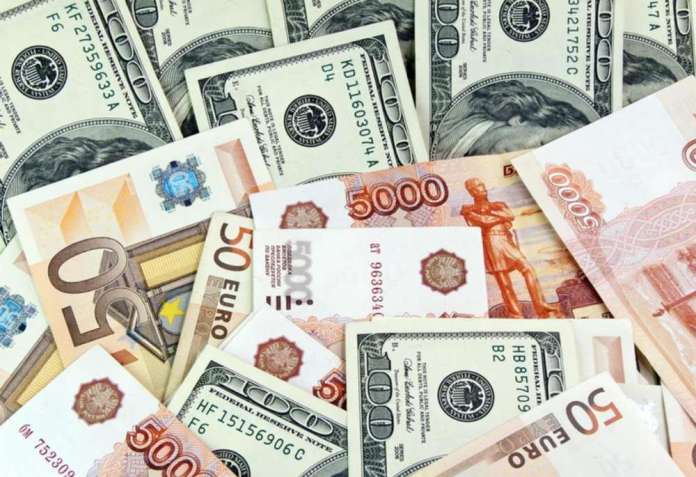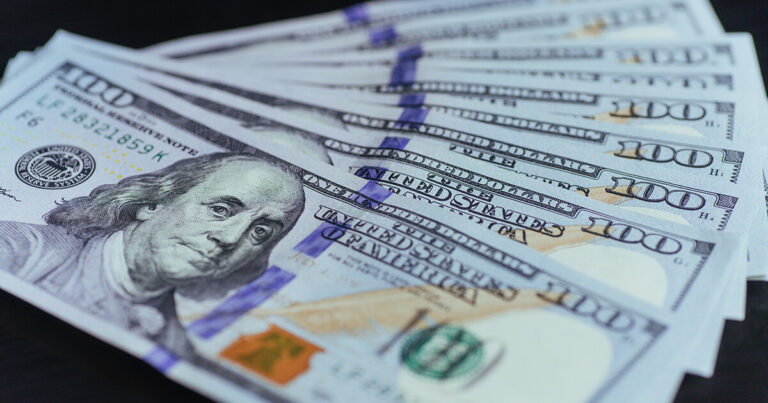 Another excellent week for the safe-haven currencies as negative sentiments continue to dominate foreign exchange rate news. Forex traders focused on negative coronavirus updates, central banks sentiments, and inflation fears in the forex trade news to run away from the riskier but more profitable assets.
Another excellent week for the safe-haven currencies as negative sentiments continue to dominate foreign exchange rate news. Forex traders focused on negative coronavirus updates, central banks sentiments, and inflation fears in the forex trade news to run away from the riskier but more profitable assets.
Overall, the American dollar flirted at the top spot among the g7 currencies while the Australian dollar drifted to the bottom.
A Glimpse At The Factors That Drove The Forex Trade News

Coronavirus News
The ravages of the coronavirus are not ending soon as the WHO reported resurging cases in the US and Latin America. As traders focused on the rapidly increasing cases of the coronavirus delta variant, safe havens dominated forex trade news.
In response to the virus’s rapid spread, the G7 nations have put multiple measures ranging from mask requirements to lockdowns to control the spread. In conjunction with overstretched health systems, these measures adversely affect global economic recovery and growth.
Economic Updates
In the week, the G7 nations posted overly impressive economic data that bolstered their currencies. China also posted excellent results. However, the ongoing coronavirus delta variant weakened the strong economic data effect on the foreign exchange rate.
Global Oil Price Forecast
Over the week, global oil prices slid by 3.69% to close just below $72 per barrel, marking another weekly loss. Due to OPEC agreements and the surging delta variant, a suppressed demand outlook caused a great deal of concern regarding the global oil price forecast.
Overview Of The G7 Economy and Performance
Table: g7 performance summary
| Currency pair | 12th July 2021 | 18th July 2021 | Average exchange rate | Percentage change | Remarks |
| USD | 92.256 | 92.687 | 92.548 | 0.620 | increase |
| GBPUSD | 1.3880 | 1.3772 | 1.3829 | 0.9137 | drop |
| EURUSD | 1.1859 | 1.1811 | 1.1817 | 0.5727 | drop |
| USDCHF | 0.9149 | 0.9194 | 0.9170 | 0.6128 | increase |
| USDJPY | 109.98 | 110.08 | 110.98 | 0.05 | increase |
| USDCAD | 1.2451 | 1.2611 | 1.2534 | 1.3257 | increase |
| AUDUSD | 0.7475 | 0.7402 | 0.7446 | 1.1089 | drop |
| NZDUSD | 0.6979 | 0.7008 | 0.6989 | 0.1858 | increase |
USD
Even though Powell had dovish comments in his testimony, the green buck reversed the previous week’s 0.13% loss and strengthened by 0.60% to 92.687. US economic data and delta coronavirus variant uncertainties delivered the upside.
Early in the week, inflation data sparked the dollar’s demand. Labor Statistics indicates that the annual pace of inflation sped up from 5.0% to 5.4% in June, while the yearly rate core inflation rate grew from 3.8% to 4.5%. Similarly, wholesale inflation pressures surged in June, with the manufacturer price index climbing higher by 1.0%, better than a previous 0.7% increase.
In the second half of the week, mixed economic data featured heavily in the forex exchange rate news. Jobless claims, retail sales, and consumer sentiment were in focus. On the positive note, jobless claims dropped from 386K to 360K, and the retail sector beat analysts’ estimates with a growth of 0.6% against a 0.5% forecasted to fall.
Meanwhile, consumer sentiment deteriorated from 85.5 to 80.8 against a projected 86.0 target. But business and production data from NY and Philly states failed to move a dial in the forex market.
A large part of the dollar’s strength is tied to Powell’s monetary policy statement in the week. During a two-day testimony, he emphasized the need to let inflation run higher rather than adjusting it too soon.
European Majors
Sterling to USD Forecast
British economic data and the surge in coronavirus infections during the week made a significant dent in the sterling to usd forecast – it fell by 0.96 percent to 1.3767 after rising 0.56% in the previous week.
At midweek, annual inflation figures uplifted the pound, with the inflationary rate jumping from 2.1% to 2.5%. And the unemployment pace increased slightly from 4.7% to 4.8%. However, while the economic updates supported the pound, concerns over the spiking Delta variant infection pulled it down.
On Wednesday, Britain reported 42.3K new cases of coronavirus, the highest since January this year. Ironically, the country continues to report higher figures despite planning to emerge from a lockdown.
EUR to USD Outlook
Euro-dollar exchange rates decreased by 0.59% over the past week, closing at 1.1806 per euro. A week earlier, it had gone up by 0.09%. In the week, Economic data and delta variant coronavirus impacted eur to usd outlook.
Trade data, industrial production, and inflation figures dominated foreign exchange rate news over the week. The trade surplus in the Eurozone narrowed in June from €10.9bn to €7.5bn. Economists expected the deficit to widen to €16.4 billion.
While Industrial production declined by 1.0% to reverse a previous 0.6% drop, the inflation rate softened from 2.00% to 1.90%. However, the figures had no impact following a change in the ECB’s policy on price stability.
Swiss Franc to Us Dollar
The Swiss franc to us dollar trading rate dropped by 0.6128% to close at 0.9194, significantly driven by the coronavirus delta variant and economic updates. The rapid spread of the COVID 19 delta variant globally weighed heavily against the Swiss franc.
In June, the Import Price and producer Index improved by 0.3%. Tom Jordan, Chairman of the Swiss National Bank, rejected an inflation target increase in Switzerland to help the central bank reach its price stability goal.
Cad to Usd Forecast
For the week ending 18th July, the Loonie depreciated by 1.33% to 1.2613. Before that, the Loonie was down 1.01%. During the week, monetary policy primarily influenced cad to usd forecast. Wednesday, the Bank of Canada held monetary policy at the same level, but revised growth forecasts downward, hurting the Loonie.
While the Bank of Canada’s most recent monetary policy statement was not as hawkish as the RBNZ’s, it did reduce bond acquisitions to C$2 billion from $3 billion per week.
BOC, however, did not sound as optimistic about their outlook as they reduced their growth forecast for 2021 from 6.5% to 6.0%. On top of the disappointing economic data and lower oil prices, this is likely why the Loonie didn’t perform as well and didn’t win any bullish traction this week.
Canada posted negatively skewed economic foreign exchange rate news, wholesale figures, employment numbers, and manufacturing data had a muted impact on Lonnie. Additionally, crude oil prices fell this week, weighing on the Loonie.
Asia Pacific, Mixed Basket
This week was a mixed one for the Australian dollar, Japanese yen, and New Zealand dollar. While the Australian dollar performed poorly, the New Zealand dollar and the Japanese yen closed the week in green territory.
US to Aud Forecast
In yet another busy week in Australia, the Aussie dollar lost 1.16% to the green buck, as employment and consumer confidence figures drove us to aud forecast. Australia posted positive economic data but had a muted impact on its currency foreign exchange rate news.
Consumer confidence improved by 1.5%, and job growth surpassed expectations, adding 51.6k to full employment following an increase of 97.5k in November. Thanks to the increased hiring, the unemployment rate in June fell from 5.1% to 4.9%.
While the economic updates were positive for the Australian dollar, the delta coronavirus variant effect weighed on the usd to aud exchange rate.
Nzd To Usd Exchange Rate
In the week, the Kiwi Dollar rallied by 0.19% to 0.6999. Earlier in the week, business confidence and electronic card sales reports dominated nzd to usd exchange rate. However, while electronic sales spiked 0.9%, business confidence dropped, with its index receding from 20.0 to 11.0.
After a rocky beginning to the week, prospects improved during the second half. The business index spiked from 58.6 to 60.7, with inflation accelerating from 1.5% to 3.3% and consumer prices rising by 1.3% in the quarter.
Although economic updates influenced the nzd to usd foreign exchange rate news, the RBNZ monetary policy statement had a more significant impact. In an unexpected decision, the RBNZ announced they would end their additional asset purchases by 23rd July.
Notably, the New Zealand dollar received reprieves that made it outperform the commodity-linked assets. First, on Wednesday when the RBNZ announced that its quantitative easing program would end earlier than expected. Then the bullish mood on the Kiwi further strengthened on Friday as inflation surged at the fastest rate since 2011.
USD JPY Forex Analysis
In yet another busy week in Japan, the Yen grew by 0.06% to 110.07 vs the US dollar. Previously, the Yen had rallied by 0.82%. Economic releases and the coronavirus pandemic influenced usd jpy forex analysis.
As the week began, machinery orders went up 7.8%, leveraging the Yen. However, Industrial production data disappointed, dropping by 6.5%. And then, tertiary industry data further worsened the situation, as the figures reduced by 2.7%.
The Bank of Japan completed the week in the foreign exchange rate news but failed to impact significantly.
Conclusion

As the US inflation and coronavirus infections spiked, the green buck emerged as the top-performing currency in the week. For the week, FOMC Chair Powell’s testimony, economic data, and the coronavirus pandemic dominated foreign exchange rate news.
Coronavirus delta variant infections will continue to have an impact on the financial market for quite some time.
Related:
Fx Market Update from 19th July to 25th July 2021
International Currency Market News From 5th to 11th July 2021




